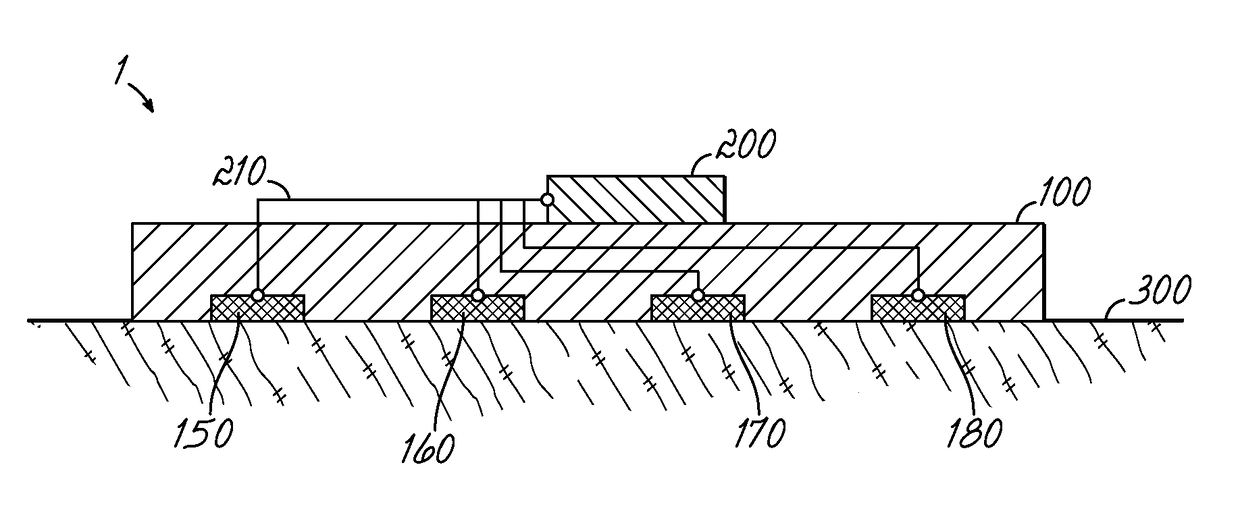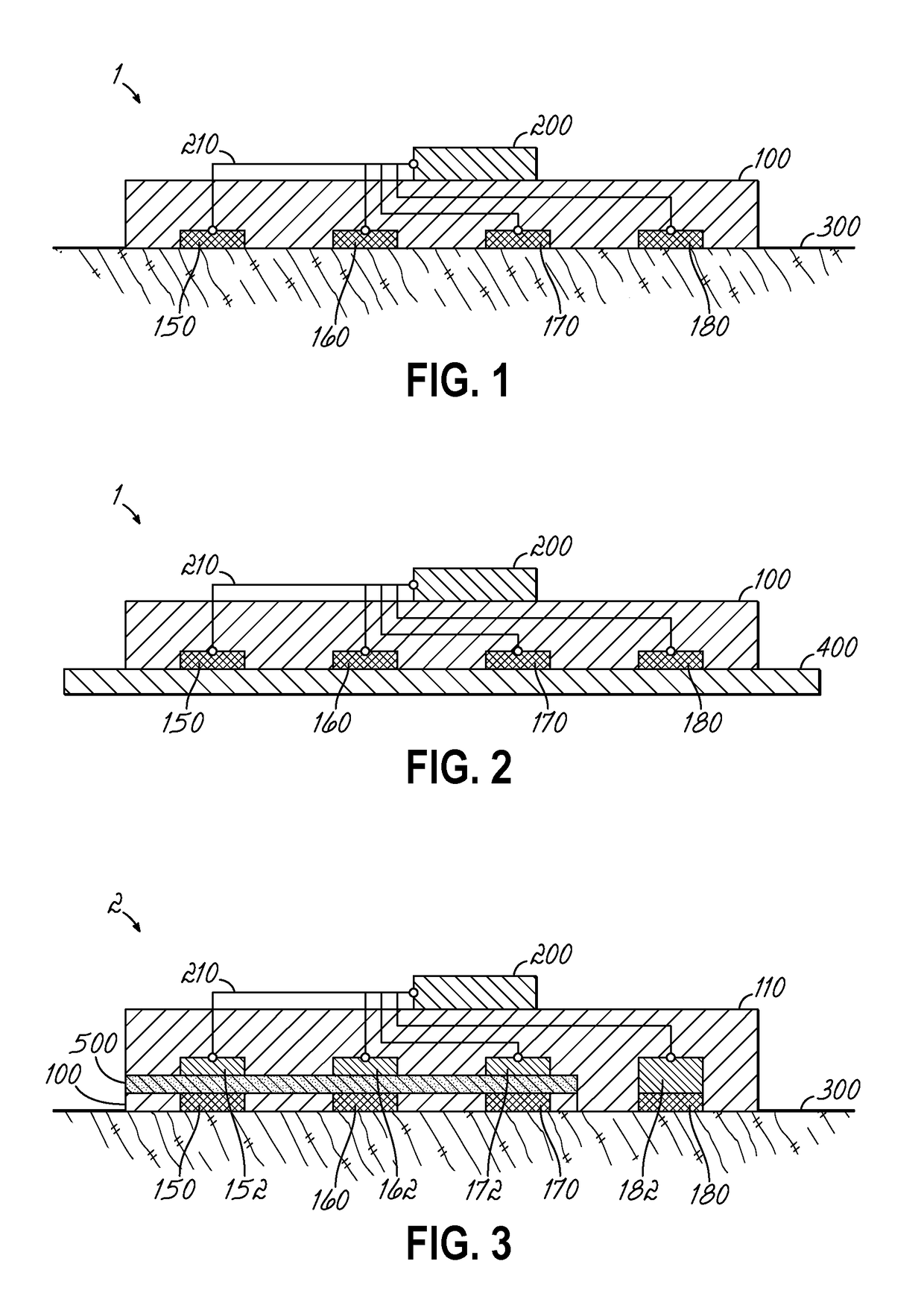Combinatorial sensing of sweat biomarkers using potentiometric and impedance measurements
- Summary
- Abstract
- Description
- Claims
- Application Information
AI Technical Summary
Benefits of technology
Problems solved by technology
Method used
Image
Examples
example 1
[0035]Na+ is measured as a proxy condition for sweat rate because Na+ concentration increases with sweat rate due to decreased time for Na+ reabsorption in the sweat duct. However, to determine if there is reference electrode drift over time, K+ is also measured with a second sensor. Both K+ and Na+ would share the same reference electrode. Because the concentration of K+ in sweat does not appreciably change with variance in sweat rate, then any drift in the reference electrode is indirectly measured. The sensor reading for Na+ can then be corrected for reference electrode drift.
example 2
[0036]K+ is measured as a proxy for prolonged muscle activity. K+ is released into the bloodstream with prolonged muscle activity or, or in the event muscle or tissue damage occurs. Since K+ concentration is normally relatively constant in sweat, an informative measurement of its changing concentration should be resolved according to time or sampling interval. Accordingly, a Na+ and / or a Cl− sensor are added to the device to measure sweat rate. Sweat rate can then be used to determine the time or sampling interval for the measured K+ signal. As a result, a proxy for muscle activity is measured. Additionally, the time or sampling interval may also be used to determine how recently the muscle activity or damage occurred.
example 3
[0037]To improve measurement of NH4+ concentration as a proxy for blood lactate, both K+ and NH4+ ion-selective electrode sensors are used. NH4+ is produced as part of the anaerobic cycle, and increases in the body as lactate increases. However, NH4+ sensors experience significant cross-interference from K+, and likewise NH4+ interferes with K+ sensors. Therefore, by comparing sensor readings for NH4+ and K+, the sweat sensor device can account for the effects of cross-interference, and thereby improve the proxy lactate measurement.
PUM
 Login to View More
Login to View More Abstract
Description
Claims
Application Information
 Login to View More
Login to View More - R&D
- Intellectual Property
- Life Sciences
- Materials
- Tech Scout
- Unparalleled Data Quality
- Higher Quality Content
- 60% Fewer Hallucinations
Browse by: Latest US Patents, China's latest patents, Technical Efficacy Thesaurus, Application Domain, Technology Topic, Popular Technical Reports.
© 2025 PatSnap. All rights reserved.Legal|Privacy policy|Modern Slavery Act Transparency Statement|Sitemap|About US| Contact US: help@patsnap.com


